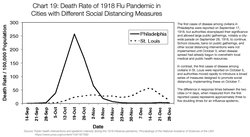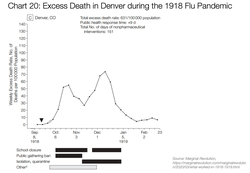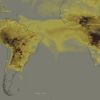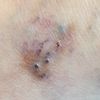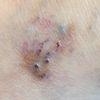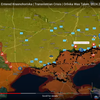Það sem við lærðum afinflúensufaraldrinum 1918.
https://medium.com/@tomaspueyo/coronavirus-act-today-or-people-will-die-f4d3d9cd99ca
Learnings from the 1918 Flu Pandemic
klikka mynd stærri
1*
Philadelphia var sein til aðgerða og margir dóu.
Berðu það saman við St. Louis með viðbúnað strax.
Denver greip til varna, en hætti svo við.
Denver fékk annan topp stærri en þann fyrri
You can see how Philadelphia didn’t act quickly, and had a massive peak in death rates.
Compare that with St Louis, which did.
Then look at Denver, which enacted measures and then loosened them.
They had a double peak, with the 2nd one higher than the first.
Það orsakaði fleiri dauðsföll í Denver í inflúensufaraldri 1918.
klikka mynd stærri
2
*We noted that, in some cases, outcomes appear to have correlated with the quality and timing of the public health response. The contrast of mortality outcomes between Philadelphia and St. Louis is particularly striking (Fig. 1). The first cases of disease among civilians in Philadelphia were reported on September 17, 1918, but authorities downplayed their significance and allowed large public gatherings, notably a city-wide parade on September 28, 1918, to continue. School closures, bans on public gatherings, and other social distancing interventions were not implemented until October 3, when disease spread had already begun to overwhelm local medical and public health resources. In contrast, the first cases of disease among civilians in St. Louis were reported on October 5, and authorities moved rapidly to introduce a broad series of measures designed to promote social distancing, implementing these on October 7. The difference in response times between the two cities (≈14 days, when measured from the first reported cases) represents approximately three to five doubling times for an influenza epidemic. The costs of this delay appear to have been significant; by the time Philadelphia responded, it faced an epidemic considerably larger than the epidemic St. Louis faced. Philadelphia ultimately experienced a peak weekly excess pneumonia and influenza (P&I) death rate of 257/100,000 and a cumulative excess P&I death rate (CEPID) during the period September 8–December 28, 1918 (the study period) of 719/100,000. St. Louis, on the other hand, experienced a peak P&I death rate, while NPIs were in place, of 31/100,000 and had a CEPID during the study period of 347/100,000. Consistent with the predictions of modeling, the effect of the NPIs in St. Louis appear to have had a less-pronounced effect on CEPID than on peak death rates, and death rates were observed to climb after the NPIs were lifted in mid-November (7–9).
Egilsstaðir, 20.03.2020 Jónas Gunnlaugsson
Bloggar | Breytt 21.3.2020 kl. 00:07 | Slóð | Facebook | Athugasemdir (0)
MUST SEE: Chloroquine Already Used on Coronavirus in US — Study Shows 100% Success Rate — And May Act as Preventative to Virus (VIDEO)
20.3.2020 | 13:55
Við verðum að lesa okkur til um málefnið. Skoða , skoða, skoða.
MUST SEE: Chloroquine Already Used on Coronavirus in US — Study Shows 100% Success Rate — And May Act as Preventative to Virus (VIDEO)
Dr. Mihael Polymeropoulos, the co-founder and former CEO of Vanda Pharmaceuticals, joined Tucker Carlson on Thursday night to discuss the use of chloroquine in the treatment of coronavirus.
On Monday Dr. Anthony Fauci, director of the National Institute of Allergy and Infectious Diseases, reported that the anti-viral medication chloroquine is showing success in fighting the coronavirus.
** An Effective Treatment for Coronavirus (COVID-19)
Dr. Gregory Rigano, the co-author of the study, later went on with Laura Ingraham and then Tucker Carlson to discuss the results from the chloroquine study.
Dr. Rigano announced that their study found that COVID-19 patients who took hydroxy-chloroquine were found free of the disease in 6 days. The patients were testing negative for the coronavirus in six days!
Dr. Rigano also said taking choroquine could act as a preventative.
On Wednesday night Dr. Rigano told Tucker Carlson that a new peer-reviewed study out of France found that chloroquine had a 100% success rate in treating patients with coronavirus.
On @TuckerCarlson Tonight, Gregory Rigano, @RiganoESQ, a Stanford Univ. School of Medicine advisor announced a 100% cure rate in a controlled study done in France of 40 people with the #ChinaCoronaVirus with a malaria drug called #hydroxychloroquine. pic.twitter.com/m78oMhwxdi
— AZKayte (@AZKAYTE) March 19, 2020
Dr. Rigano also tweeted out his results:
UPDATE:
Full peer reviewed study has been released by Didier Raoult MD, PhD https://t.co/DzFTv13wYn.
After 6 days 100% of patients treated with HCQ + Azithromycin were virologically cured
p-value <.0001https://t.co/vttAIWbPwJ
Skip— Gregory Rigano (@RiganoESQ) March 18, 2020
On Thursday night Dr. Mihael Polymeropoulos that not only is chloroquine successful in treating coronavirus but it acts as a prophylactic and may inhibit a person from catching the disease.

This is tremendous news!
Bloggar | Breytt 1.4.2020 kl. 14:04 | Slóð | Facebook | Athugasemdir (0)


